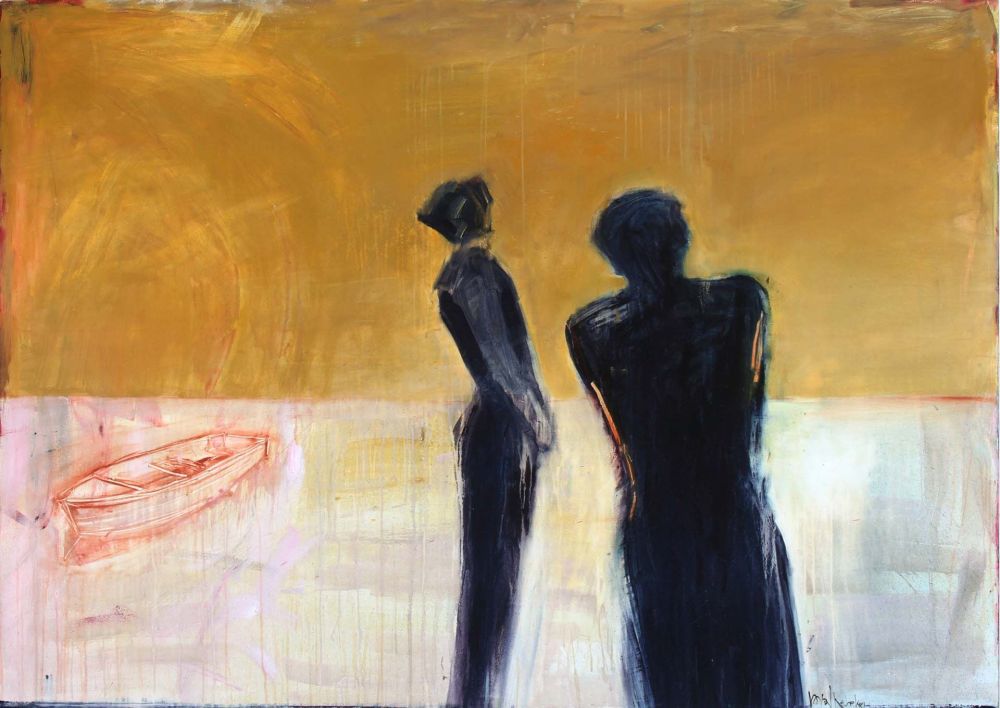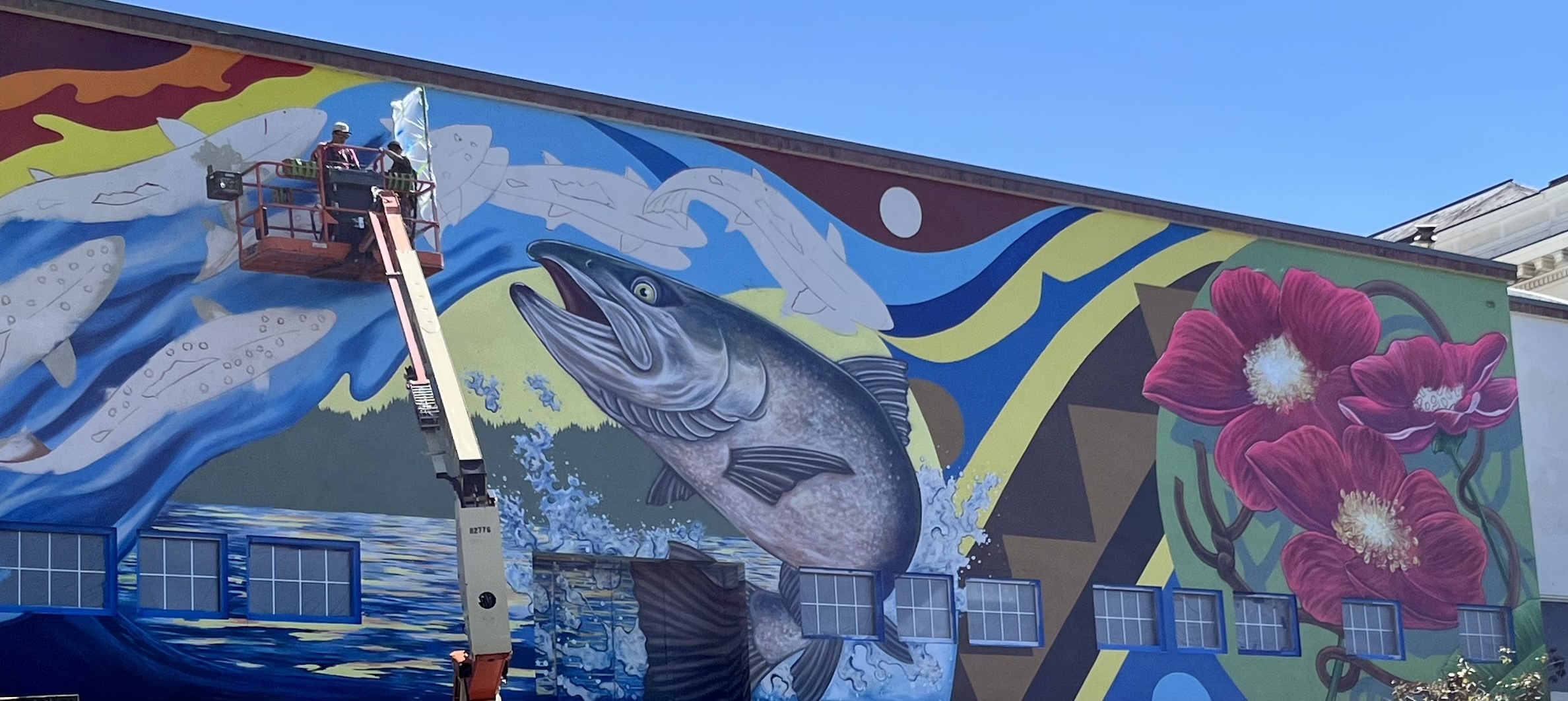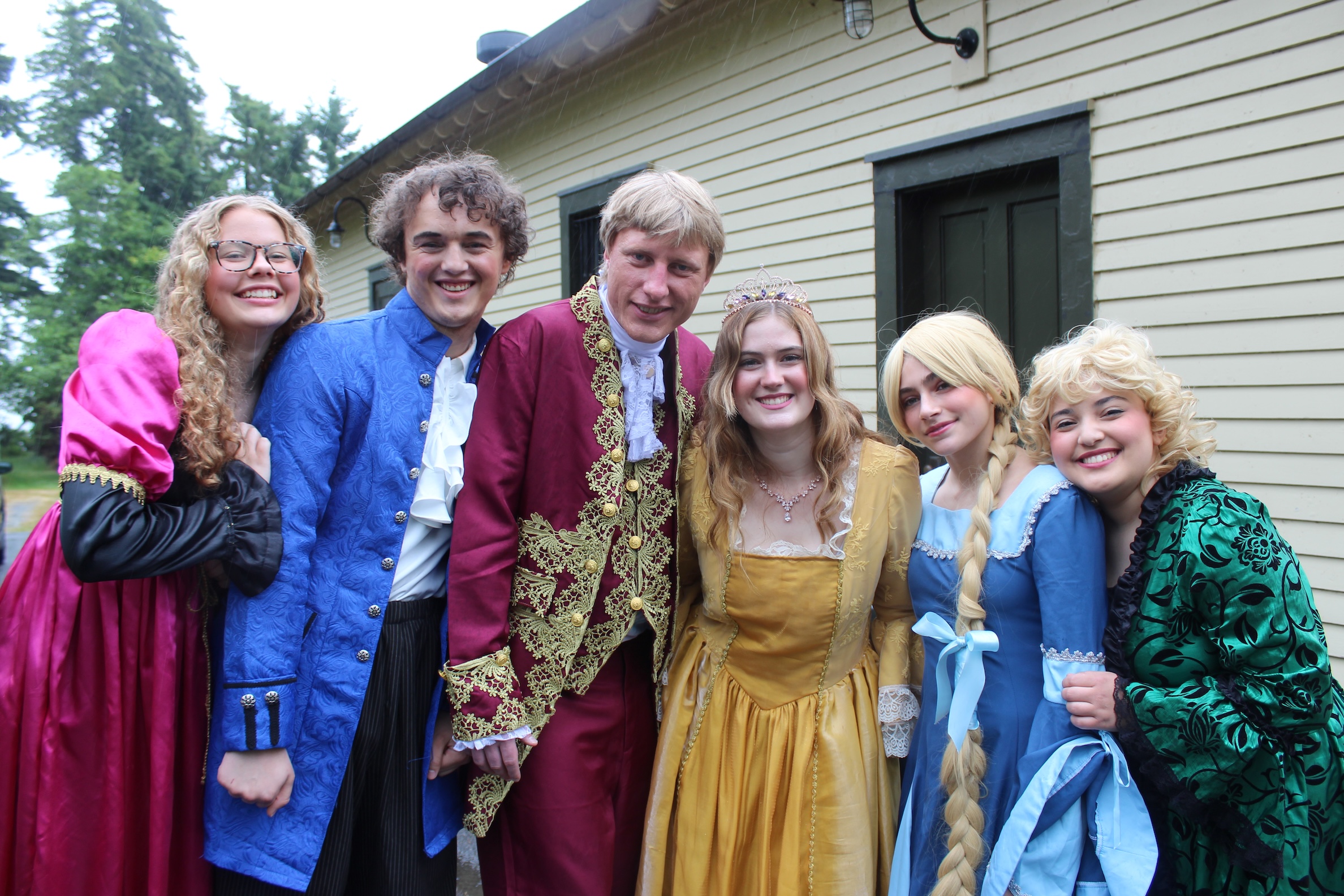Royal Nebeker: Art flows through him
Published 3:25 am Thursday, July 17, 2014

- <p>"She and I" by Royal Nebeker.</p>
From the time I was a small child in elementary school, art was what I enjoyed doing. I was drawn to it. So says Royal Nebeker, now an internationally recognized artist and long-time art instructor at Clatsop Community College.
Trending
Nebeker can also tell you the moment he became an artist. I was always engaged in the physical materials of making things. With art projects in school I was emotionally engaged with all the colors. One class assignment was to draw a utility vehicle; the teacher would place the best drawings on the wall the next day.
Mine wasnt there, he recalls, and I started to laugh. It was an epiphany. I knew that my drawing was the best, and the teacher was wrong. From then on I was confident in my creative expression, and I distrusted authority. I became an artist. It was something that was all mine, and I was never deterred.
Later on, making a living in art was a very different proposition. Though his parents were creative people, and he had grown up in a house full of paintings (In Norwegian culture, Edvard Munch is extolled as the greatest artist in the world.), I was constantly told that art was a great avocation, but I couldnt make a living as an artist.
Trending
Nebeker earned a degree in psychology at Brigham Young University, while taking every art elective course he could. He then left for Europe, where he found that, In European culture it was quite possible to be validated as an artist. An art teacher told him it was possible to make a living as an artist, and that teaching evens out income from galleries and gives back to the community. Someone finally put things in proper perspective.
He returned to BYU and earned a Master in Fine Arts in 1970. Still not feeling fully trained as an artist, he applied to study at the Royal Academy of Arts and Crafts in Oslo. After a rigorous examination (four days alone were devoted to drawing the nude), Nebeker was one of 30 selected from 4,000 applicants.
While at the academy, he received a grant to live and work at Edvard Munchs home, which had been converted into a museum. At last he felt fully trained and found a wonderful validation in Oslo.
Nebeker began submitting art to galleries in the order from least to most prestigious, and I became acquainted with rejection. To his surprise he was finally accepted by the last gallery on the list.
This led to meeting other artists and representation in other European galleries. He returned to the United States in 1974 as an established artist, looking for a place that reminded him of Scandinavia. He found Astoria, and began teaching at CCC. He now lives in Gearhart.
Still unsure if it was possible to live in rural Oregon and function as an artist, Nebeker put that question to Pulitzer Prize-winning poet Gary Snyder after a poetry reading at CCC. Snyder told Nebeker he had the responsibility to be the artist, but to participate in the largest sphere he could dream of, and bring it back.
That was my second epiphany, Nebeker says. I learned to think globally, act locally from Snyder. It became evident to me that this is the way I would lead my life.
As Nebekers art matured, it developed what he calls, a signature look that defies definition in terms of a particular school in modern art. My work is my own … My painting is metaphorical to my life. He quotes 19th century Danish existentialist theologian and poet Søren Kierkegaard, We live forwards, but we understand backwards, and says, My work is autobiographical, a visual diary, a memory that connects to a life experience. Like life, Nebeker finds he can only understand his paintings backwards.
When he looks at one of his paintings, Nebeker says, Everything I did has to be there, everything I experienced. It is a wonderful serendipitous experience that other people can relate to my work. They dont share the experience, but the core, the kernel of universal truth that I try to apprehend in my work, others could understand in terms of their own lives.
Over the years, Nebeker says, I have condensed and simplified what I have been doing as an artist. If there is a goal to my painting it is still to apprehend universal truth, and it is hyper-intimate experience that brings us to universal truth. As a result, the intellectual filter that the work grows in is subordinate to the subconscious. Thats where the work is coming from. I am honored that it flows through me onto the canvas.
Sometimes when people ask Nebeker about his art he tells them, Youre not talking to the guy who painted this work.
As to his life in Astoria, Nebeker found that, cloistering myself in a small town with little pressure, I could develop and follow my own vision as an artist. This community is very supportive of the arts, with a unique cultural background. He found it gratifying to invite other artists to the area and to train young artists, and as a CCC instructor he, selfishly created the community I wanted to be a part of. This same community rallied around him, offering its support as he recently endured a life-threatening illness.
At this point in his life, Nebeker says, I feel little interest in my own fame, but having these paintings recognized is part of being in the service of the art that flows through me.









